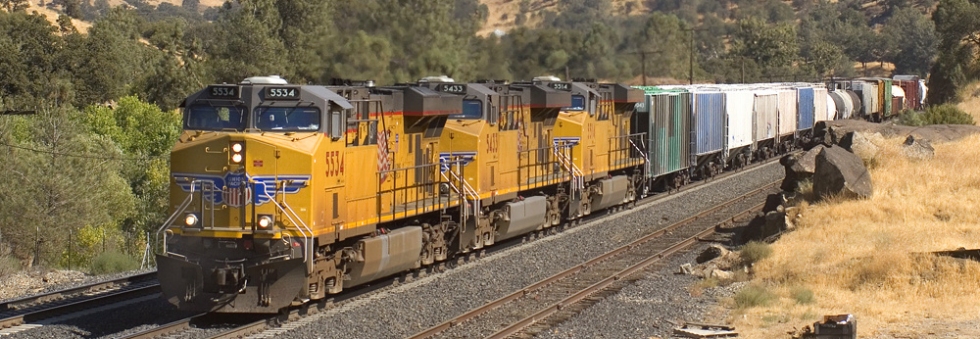|

Rail Traffic Down 8.5% for the Week Ending July 18
July 22, 2020 – The Association of American Railroads (AAR) today reported U.S. rail traffic for the week ending July 18, 2020 (week 29).
For this week, total U.S. weekly rail traffic was 481,597 carloads and intermodal units, down 8.5 percent compared with the same week last year.
Total carloads for the week ending July 18 were 214,685 carloads, down 15.7 percent compared with the same week in 2019, while U.S. weekly intermodal volume was 266,912 containers and trailers, down 1.7 percent compared to 2019.
One of the 10 carload commodity groups posted an increase compared with the same week in 2019. It was miscellaneous carloads, up 212 carloads, to 10,782. Commodity groups that posted decreases compared with the same week in 2019 included coal, down 22,464 carloads, to 56,202; metallic ores and metals, down 6,659 carloads, to 15,766; nonmetallic minerals, down 6,108 carloads, to 30,986, and forest products, down 10.0% to 8,683 carloads.
For the first 29 weeks of 2020, U.S. railroads reported cumulative volume of 6,117,168 carloads, down 16.1 percent from the same point last year; and 6,951,086 intermodal units, down 9.6 percent from last year. Total combined U.S. traffic for the first 29 weeks of 2020 was 13,068,254 carloads and intermodal units, a decrease of 12.8 percent compared to last year.
North American rail volume for the week ending July 18, 2020, on 12 reporting U.S., Canadian and Mexican railroads totaled 312,112 carloads, down 13.1 percent compared with the same week last year, and 354,593 intermodal units, down 1.8 percent compared with last year. Total combined weekly rail traffic in North America was 666,705 carloads and intermodal units, down 7.5 percent. North American rail volume for the first 29 weeks of 2020 was 18,061,760 carloads and intermodal units, down 11.7 percent compared with 2019.
Canadian railroads reported 71,949 carloads for the week, down 13.1 percent, and 67,698 intermodal units, down 5.1 percent compared with the same week in 2019. For the first 29 weeks of 2020, Canadian railroads reported cumulative rail traffic volume of 4,005,349 carloads, containers and trailers, down 8.5 percent.
Mexican railroads reported 25,478 carloads for the week, up 16.7 percent compared with the same week last year, and 19,983 intermodal units, up 10 percent. Cumulative volume on Mexican railroads for the first 29 weeks of 2020 was 988,157 carloads and intermodal containers and trailers, down 9.9 percent from the same point last year.
Rail traffic data for commodity groups are available in the AAR's Week 29 Railroad Traffic report (4-page pdf).
SOURCE: Association of American Railroads (AAR) |